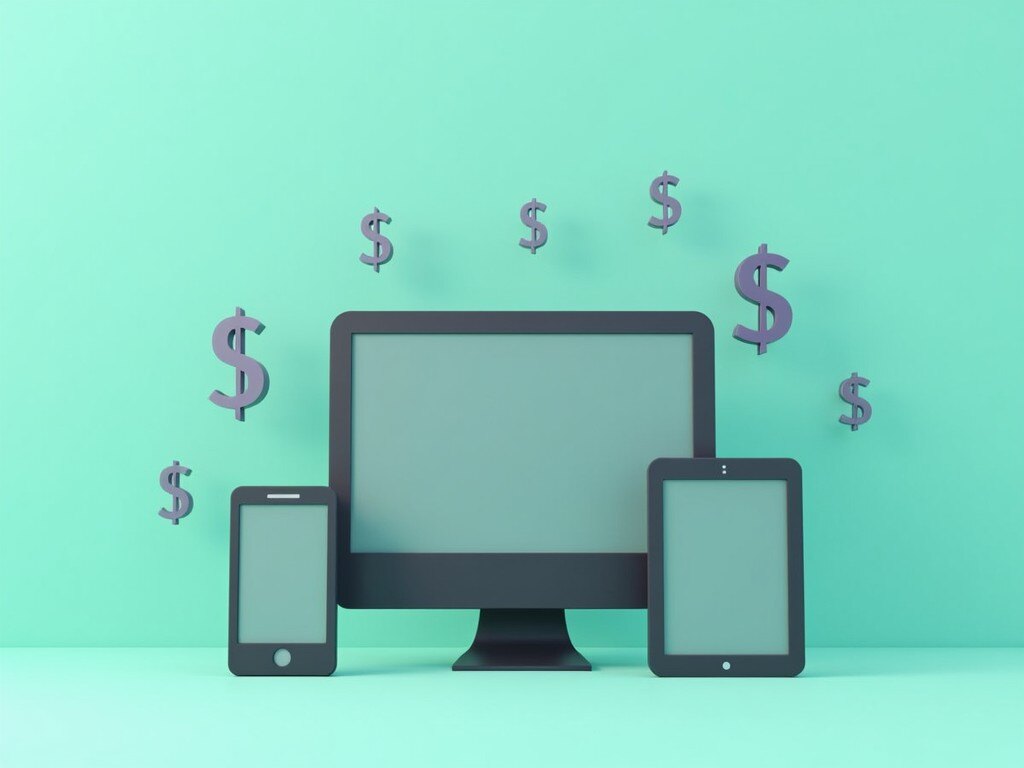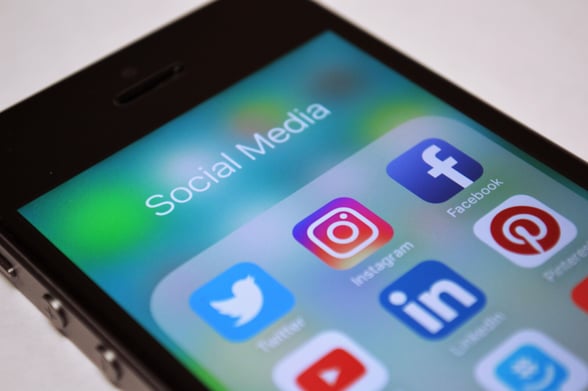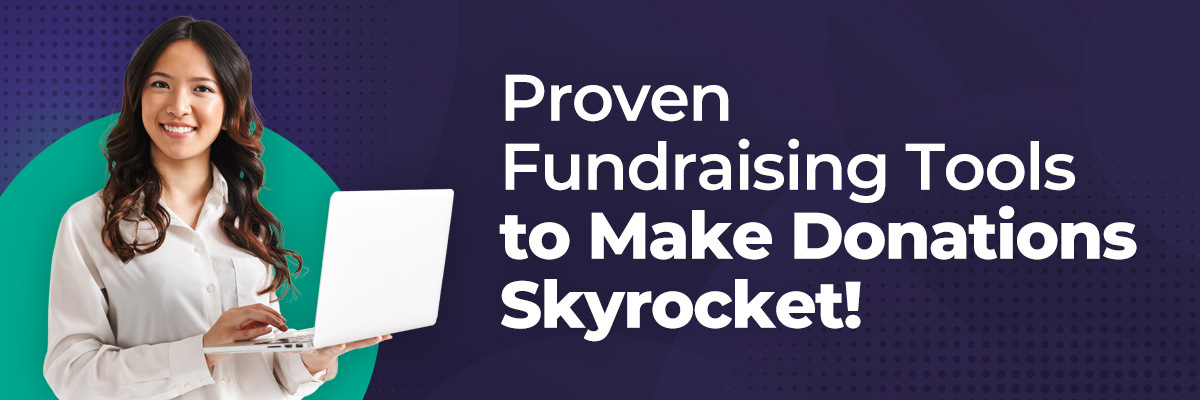
Effective fundraising strategies for nonprofit organizations are changing thanks to technological advances and sustainable development, along with the shifting expectations of donors. Nonprofit organizations need to adapt their engagement strategies to remain relevant and reach their fundraising goals in a highly competitive philanthropic environment, as well as cultivate long-lasting relationships with donors.
Technology has also changed how nonprofits make donor connections as options like direct mail become less utilized. It’s opened channels through social media, crowdfunding sites and analytics, making it easier for nonprofits to reach their supporters. Using personalized emails, mobile donations and virtual fundraising events with a nonprofit fundraising platform has made it easier to reach out to people more conveniently, catering to a more tech-savvy audience as they determine where to make their charitable gifts.
At the same time, sustainability has become a focal point for donors. Supporters want nonprofit organizations to have eco-friendly and socially responsible practices. Nonprofits must communicate their commitment to sustainability to make themselves attractive to eco-conscious donors. Whether it’s going paperless in campaigns, organizing carbon-neutral events or implementing initiatives, each step matters.
Evolving donor expectations are also reshaping fundraising strategies. Modern donors want transparency, impact-driven narratives and authentic connections with the causes to which they contribute. Younger generations, especially Millennials and Gen Z, prefer immersive experiences to transactional giving.
As far as nonprofits are concerned, it comes down to innovation: steps like using artificial intelligence to interpret donor behaviors, gamifying fundraising efforts or deploying other compelling technologies such as virtual reality to depict your impact. Every piece of the puzzle matters and inclusive, diverse campaigns can extend your audience reach.
Organizations that practice to these strategies and focus on meaningful, tech-enabled and sustainable engagement will find ways to thrive.
Table of Contents
Smarter Fundraising with Technology
Reaching Donors Where They Are
Hosting Impactful Hybrid and Virtual Events
Building Stronger Donor Relationships with Personalization
Adopting Sustainable and Collaborative Models
- How can nonprofits measure the success of their fundraising strategies?
- What are the emerging trends in donor behavior for 2025?
- How can smaller nonprofits adopt innovative fundraising strategies on a budget?
- What tools can nonprofits use to enhance donor engagement?
- How can nonprofits effectively balance traditional and digital fundraising methods?
- What are the best practices for maintaining donor trust and transparency?

Smarter Fundraising with Technology
1. Let AI Guide Your Fundraising Decisions

AI is changing how nonprofits think about their donors. AI tools can analyze historical data and predict behavior. It can project when a donor will give, how much they’ll provide and what matters most to them. This innovation offers nonprofits insight, allowing nonprofits to create targeted campaigns that feel personal and meaningful to each donor as part of their fundraising strategies.
For example, AI can segment your donor file into potential donors, recurring donors, first-time donors and even those who have gone silent so that you can message them accordingly. Instead of a one-size-fits-all approach, you can send a message that speaks directly to a donor’s interests or past involvement and increase the chances of engagement.
Furthermore, AI analytics can detect trends such as seasonal giving habits or events that interest people the most. Some applications, like Salesforce Nonprofit Cloud or DonorPerfect, have dashboards that represent such information and help you decide locations for resource allocations.
AI optimally helps you in seeking funds as it saves time and increases impact. It enables you to use data to develop your nonprofit fundraising strategy beyond just asking for donations; it allows connection and inspires people for recurring giving and long-lasting relationships with nonprofits they support.
2. Use AI Chatbots for Donor Support
Chatbots are changing how nonprofits communicate with their donors, creating a connection that feels almost natural while remaining modern and innovative. Chatbots are available 24 hours a day, seven days a week and can successfully answer many donor questions.
Whether it's someone looking for answers to questions about your organization, trying to confirm event details or for help contributing, AI chatbots can deliver clear, consistent answers without wasting time.
What distinguishes the power of chatbots is their ability to ease the entire process of donating. For websites or social media pages, bots typically streamline the whole giving process, from prompting the process to verifying payment information and even sending confirmations in real-time. All of these reduce friction that would otherwise have led to a donor leaving without finishing the donation.
Chatbots also conform to the particular needs of individual donors: the chatbots personalize the interaction depending on user behavior. A welcoming message, for instance, would be given to someone who had donated before. For the first-time donor, however, more detailed information about what your organization stands for would be communicated to that new donor.
Reaching Donors Where They Are

3. Tell Stories That Shine on Social Media
Social media narratives shouldn't be underestimated as part of fundraising strategies. Platforms such as Instagram Reels and TikTok have changed the dynamic regarding storytelling for nonprofits; instead of rolling out long, highly produced videos, a nonprofit can connect with donors through short, high-impact visuals.
These social media platforms thrive on immediacy and an ability to relate well to a wider variety of audiences, making them an ideal way to put your mission into a bite-sized, compelling format. Aim for real, genuine short stories that elicit emotions. Tell the story of a beneficiary or a community intervention and pair it with a call-to-action caption.
Remember, simple but relatable appeals to people nowadays are essential. Well-polished content, while having its advantages, may not give you that personal connection. Interactive social media tools such as polls, Q&A sessions or donation stickers can also intensively engage the donor and increase the likelihood of a charitable gift.
For example, you could use polls to find out what cause followers want to support or how they want to engage. Furthermore, a real-time connection can be generated through live events: behind-the-scenes tours, live Q&As with your team or donor shout-outs.
Another way to keep your audience always entertained is by creating series-based content, such as weekly updates on a project's progress. You can also tie in trending audio or hashtags if it will help broaden your audience reach.
Lastly, measure what works. Social media platforms offer analytics that track engagement, views and shares; these are tools to refine your approach. It isn't just about making the rounds and keeping up with appearances; it’s the medium through which a community is built for taking action and sustaining long-lasting relationships with the cause they support.
4. Crypto Donations and Blockchain Transparency
Cryptocurrency donations are now part of the nonprofits organize themselves to reach modern, tech-savvy donors. Bitcoin and Ethereum have become mainstream and part of nonprofit leaders' fundraising plans and strategies. Blockchain makes a difference by giving nonprofits greater transparency in their donation accounting.
This means nonprofits can be transparent when receiving donations and dispersing funds. Donors see where their money goes in real-time, so they trust and believe in the organization’s finances. This transparency means donors know their gifts are being used as intended and they feel more connected to the cause.
However, crypto adoption comes with its drawbacks, including volatility, regulatory compliance and how to integrate this into existing donation systems. Partnering with reputable platforms that automatically convert crypto donations into cash can mitigate the risks and increase operational efficiency.
As donors expect more transparency and innovation, accepting crypto puts nonprofits ahead of the curve regarding trust and tech – as long as it’s done responsibly.
Hosting Impactful Hybrid and Virtual Events
5. Hybrid Events: Combining In-Person and Online Experiences
Nonprofits now have hybrid events that make connecting donors at different locations easier. These events combine live and virtual experiences to provide maximum flexibility, increasing their appealing to more supporters.
These hybrid fundraising events allow donors to attend local events in person and at the same time, enables others outside the area or unable to travel to join virtually. This dual approach means you cast a much wider net and leave no one feeling left out.
Choosing between a hybrid event's live and virtual components requires careful planning. Both audiences should seamlessly share the experience. Use technology like a live-streaming platform with interactive features to allow virtual attendees to participate in polls, Q&As or chat rooms.
Similarly, create the same kind of inclusions for those attending the event in person, such as big screen displays of inputs from remote contributors. It is also vital to prioritize accessibility: provide closed captioning for virtual sessions, simple instructions for joining online and convenient registration for everyone. Ensure the in-person venue has good internet and AV components to avoid technical mishaps.
6. Virtual Events: Engaging Donors from Anywhere
Virtual events are dynamic spaces where nonprofits can connect meaningfully to donors. However, keeping that engagement high takes creativity. Live polls, breakout rooms and gamified activities are some means that can transform a virtual event into an interactive experience that resonates with attendees.
Live polling is one of the best ways to collect real-time donor opinions. Whether it’s gauging interest regarding future campaigns, how to raise money for nonprofits or wanting their input on where money should be spent, polls create a feeling of interaction for the participants while breathing life into the event. Platforms like Zoom make the process of setting up live polls seamless.
Breakout rooms allow more personalization in building ties. They can be used for small-group discussions, appreciation of donors or even hands-on activities like mini-workshops related to your cause. Breakout rooms facilitate participation, allowing attendees to develop more meaningful relationships with the organization.
Your donors will have a blast by adding fun to the virtual events with some competitive gamified activities, like trivia quizzes related to your mission or digital scavenger hunts. At the same time, it subtly reinforces your cause.
With technology a central piece of these events, it’s important to make sure you avoid tech problems that can take away from attendees’ overall experience. Test all tech equipment thoroughly before an event and assign a tech support team for troubleshooting live.
Along with testing beforehand, consider backup plans. For combatting low engagement, consider providing attractive opening content and encourage participation by offering incentives such as unique content or recognition during the event.
Building Stronger Donor Relationships with Personalization
7. Using Predictive Analytics for Donor Retention
AI has become an enormous asset that nonprofits can use to analyze their donors better and keep them engaged with their support. When identifying at-risk donors — those who might stop donating — AI scans the details buried in data to evaluate patterns.
These patterns include factors such as frequency and amount of donations, engagement (e.g., opening an e-mail or attending an event) and general trends such as an economic hardship, all of which can be used to spot donors who warrant closer observation.
AI doesn't stop there once at-risk donors are identified. It even helps design personalized outreach messages to re-engage them. For instance, a donor who hasn’t donated for six months but regularly supports education activities could receive a customized email sharing updates about a school project that they’ve funded.
In the same spirit, AI can schedule reminders or suggest a touching thank-you note to reignite that connection with your mission. With AI, nonprofit leaders no longer need to guess when it comes to relationship building.
Gone are the days of generic outreach; fundraising methods for nonprofits now mean meeting donors where they are, both emotionally and contextually. Offer experiences for all your donors to help them feel valued and promotes long-lasting relationships with your nonprofit, not just because of their contributions but also because they’re part of your cause.
8. Make Every Donor’s Journey Unique
Automation provides nonprofit organizations with an effective means to customize each donor journey so that no donor feels neglected or without one-on-one attention from your team. This process is possible through tools such as CRM systems and email marketing platforms, which help create these personalized giving journeys from first contact to the next gift.
For example, imagine a donor giving for the first time. Automation can immediately trigger a personalized thank-you email, acknowledging not just their donation but also their specific contribution to your mission. Beyond gratitude, follow-up emails can share stories or updates relevant to their interests, whether it’s a campaign they supported or a broader organizational milestone.
Automation can interpret engagement trends to develop interaction outreach. For example, a lapsed donor may get an affectionate message about how their donations made a difference. In contrast, a frequent donor may be invited to join a recurring giving program or attend a special event.
Adopting Sustainable and Collaborative Models
9. Go Green with Sustainable Campaigns
More and more organizations are taking advantage of green campaigns to mobilize environmentally conscious donors. One of the many eco-friendly options is a tree planting drive, an initiative that allows donors to visualize their contributions' actual impact. To illustrate, donors can make a $20 donation to fund a tree while you provide ongoing updates about reforestation.
Simple as the donation may be, it becomes an enriching experience with a highly proactive dimension. Zero-waste events are another attractive option. Using digital invites, locally sourced materials or forfeiting single-use plastics can demonstrate how much your nonprofit believes in the environment.
These efforts show donors that your organization believes in the same values as they do. Campaigns like these are about more than just raising funds — they reflect a mission that resonates with your audience. Prioritizing sustainability builds trust and fosters lasting relationships with supporters who care deeply about protecting the planet.
10. Collaborative Fundraising Models
You can add another dimension to your 2025 campaigns by bringing businesses or other nonprofits on board. This partnership incorporates the company's resources and audience reach with your nonprofit's mission-driven expertise.
For example, collaborating with a local business can result in joint marketing efforts, a matching gift program or in-kind donation opportunities for increased campaign visibility and impact. The same holds for partnering with another nonprofit organization (one whose work complements your own) to pool resources, minimize costs and reach wider audiences.
An example can be two education- and health-focused nonprofits coming together in a back-to-school health drive by supplying students with materials and medical check-ups.
These collaborations also show donors that your organization appreciates innovation and partnership. In turn, you're creating a win-win situation in which everyone — partners, donors and beneficiaries – see enhanced impact from what they contributed.
Bring Donor Stories to Life
11. Show the Impact of Every Donation
Infographics and video updates are extremely effective ways to show donors how their contributions change the world. Infographics can often simplify complex data into digestible, eye-catching designs as part of fundraising strategies for nonprofits.
For instance, a chart about how $100 can feed a family creates an immediate understanding of donor impact. Such visuals can be shared on social media, where they can inspire more giving. Videos elevate the art of storytelling by showcasing visible faces behind a cause.
A brief testimonial video from those your organization serves goes a long way in inspiring emotion and creating deep connections with donors. This will also increase your donor retention rates. Think of a 60-second video update showing a collection of supplies and distribution of new school materials to children or a water well dug in a remote community. These are the moments that create a lasting impression.
Conclusion
Connecting with donors in 2025 is about adopting new tools and trends that matter as part of fundraising strategies for nonprofits. Whether that means using AI for personalization, offering online donations or having an environmentally friendly campaign, innovation helps nonprofits build an infrastructure to support strong relationships that last for a long time.
Interested in taking your fundraising to an even higher level and build long-lasting relationships with your donors? Let Vanco help you and use our 25-plus years of experience in how to raise money for nonprofits. Fundraising becomes simpler with our easy-to-use solutions, designed with your nonprofit in mind.
FAQs
How can nonprofits measure the success of their fundraising strategies?
You can measure success by tracking key metrics such as donor retention rates, average gifts and campaign return on investment. Engagement on digital platforms and donor feedback are extremely valuable.
What are the emerging trends in donor behavior for 2025?
Donors are moving towards personalization, transparency and sustainability in giving. Cryptocurrency and micro-donations are now being adopted as digital-first giving options.
How can smaller nonprofits adopt innovative fundraising strategies on a budget?
Small nonprofits should utilize social media tools, host virtual events or work with other nonprofit organizations through resource sharing as part of their nonprofit fundraising strategy.
What tools can nonprofits use to enhance donor engagement?
Nonprofits can communicate better, tailor their outreach and streamline the donation process with CRM software, AI analytics and chatbots.
How can nonprofits effectively balance traditional and digital fundraising methods?
Nonprofits can add digital elements to in-person campaigns, like having an online donation option at an event.
What are the best practices for maintaining donor trust and transparency?
Clear communication, concise impact reports and regular updates on how the donation is being used to impact the donor directly. Donation receipts are also a core part of the process.
Ready to boost donations for your nonprofit?
Ensure a steady stream of support for your nonprofit. Discover how Vanco’s Recurring Donation Platform can simplify giving and maximize impact.
Get started!
100+ Free Tools & Templates to Boost Donations
We’ve put together 100+ pro tools and templates that are guaranteed to boost your nonprofit’s fundraising—no guesswork, no fluff. Here’s what’s inside:
- Word-for-word fundraising scripts that turn "no" into "yes"
- Fundraising letter, email and thank you templates for every situation.
- Event planning and evaluation tools including checklists, reports, evaluations, surveys and more
- Plug-and-play sponsorship proposals and templates sponsors can't resist
- Free design materials that make your events look professional
- Donation Receipt Templates for every type of contribution
- 7 AI bots to handle repetitive tasks and save you hours
The only question left: Are you ready to turn the chaos into success?
Act now!









